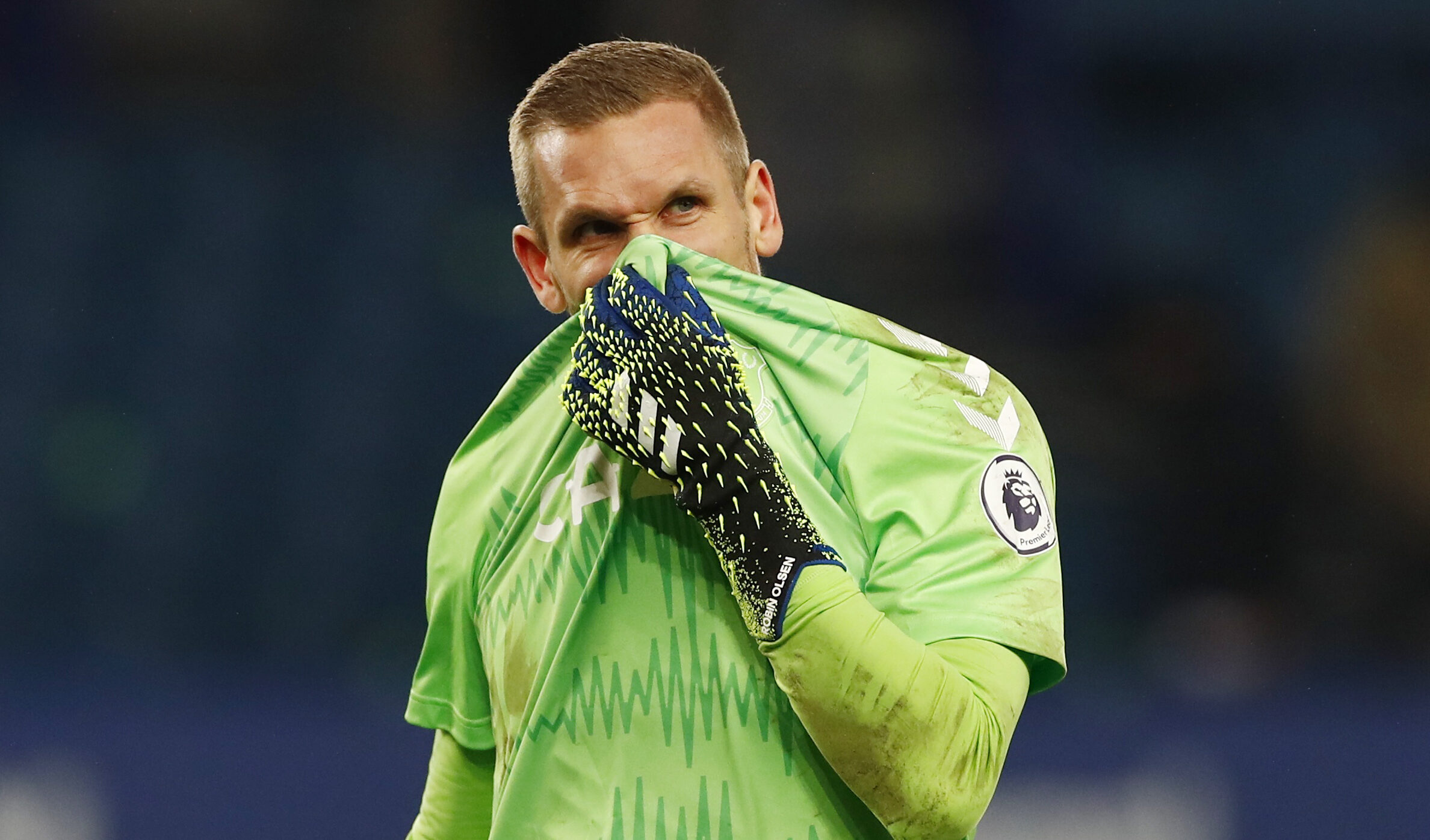Everton slipped to a first-ever Premier League home defeat against Fulham.
Josh Maja opened the scoring on 49 minutes when he met Ola Aina’s ball to the far post after the Blues were carved open down their left-hand side.
Maja doubled his and the visitors’ tally just 17 minutes later as Harrison Reed’s long-range shot broke kindly for him off Robin Olsen’s near post.
Here were the key talking points from Goodison Park:
No longer any certainties for Blues
Few things were more certain in life than an Everton home win over Fulham.
Goodison Park had enjoyed 22 consecutive top-flight victories over its west London counterparts in a run which stretched all the way back to March 1961.
But Carlo Ancelotti’s side allowed their relegation-threatened visitors to bridge a previously 10-point gap in their ongoing battle for Premier League survival.
On the back of two spirited fightbacks in the past eight days against some of the most formidable opposition, the onus was firmly on the Blues to deliver.
Not even playing Jeff Hardy’s WWE entrance music at half time, however, inspired Ancelotti’s players to produce anything other than a meek surrender.
The sole genuine semblance of fight from Everton came in the form of some penalty area handbags during the latter stages of second-half stoppage time.
Ancelotti’s late and confusing changes
Several times in the first half, Ancelotti turned around to face the substitutes’ bench to the point that it appeared much-needed changes were imminent.
Instead, the Everton manager waited a further six minutes after the restart to send on the cavalry, and that only came after his team fell a goal behind.
More bewildering than the belated introductions of Joshua King and Michael Keane was the decision to take off two of arguably the hosts’ best performers.
Tom Davies and Seamus Coleman could be forgiven for being bemused by their withdrawals in a game where they offered more than their teammates.
Ancelotti’s decision to allow Mason Holgate, Gylfi Sigurdsson and Andre Gomes to stay on, similarly, added confusion about his in-game strategy.
Clearly something had to alter as Fulham’s ascendancy grew, long before they broke the deadlock, but the timing and choices left a lot to be desired.
DCL loss exposes hole in attack
A testing week ahead will have at least one genuine positive for Everton.
Whatever the outcome of their daunting double-header with Manchester City and Liverpool, Dominic Calvert-Lewin’s swift return is a much-needed one.
The England international sat out this game through a slight hamstring issue and his absence was sorely missed in more than a mere goal-scoring threat.
When Calvert-Lewin leads the line, Everton’s attack has genuine definition and it was something that proved conspicuous by its absence on Sunday.
In lieu, Sigurdsson had the unenviable task of occupying the false nine position; a role which he subsequently did everything to avoid operating in.
This was just the second time that Everton have been forced to soldier on without Calvert-Lewin’s services to call upon during the current campaign.
His front line cohorts will be hoping it is the last time they will need to do so.
Goodison fear factor reversed
Premier League opponents teams have dreaded annual trips to Goodison.
The intimate setting of the Grand Old Lady make it a stadium that most are in a hurry to escape it as soon as possible – and includes Everton themselves.
Not since edging out Arsenal in front of a reduced capacity of 2,000 fans shortly before Christmas have Ancelotti’s charges tasted victory in the league.
Wednesday’s visit of champions-elect City threatens to extend that barren domestic run with their hosts failing to win their last three home games.
Playing without supporters present has undoubtedly impacted on Everton’s ability to re-calibrate to Goodison’s newly subdued surroundings once more.
Given how winning on the road is now something of a specialty, next weekend’s trip to Anfield suddenly does not seem all that daunting.

